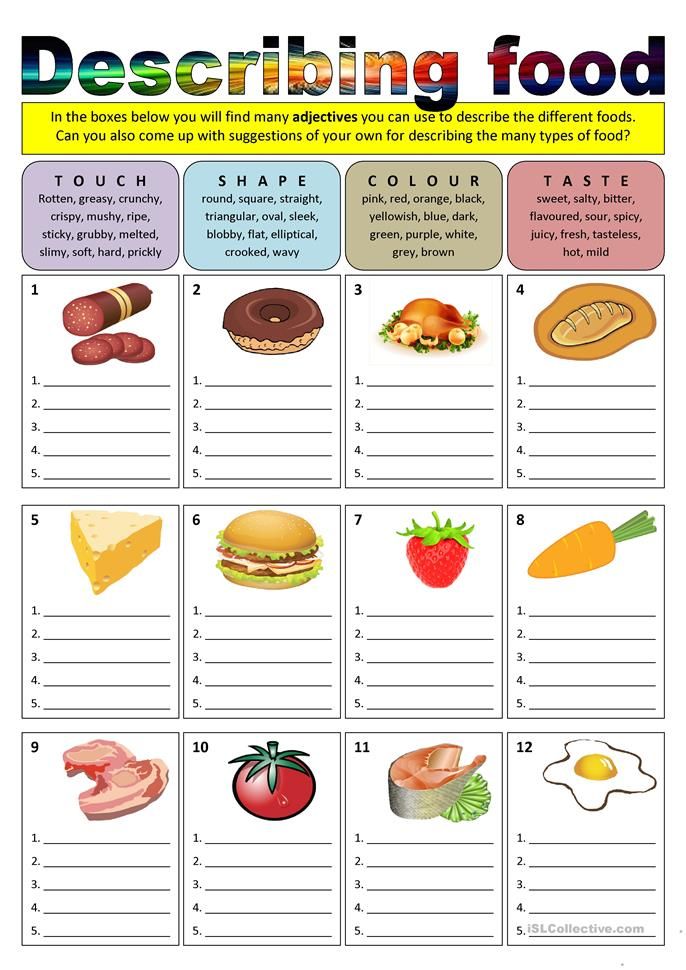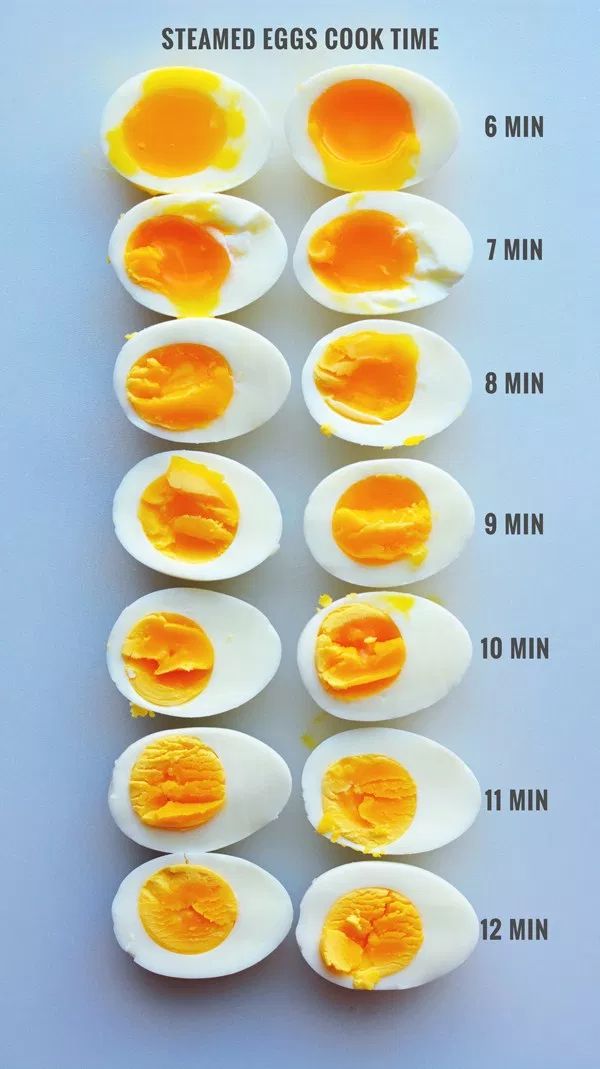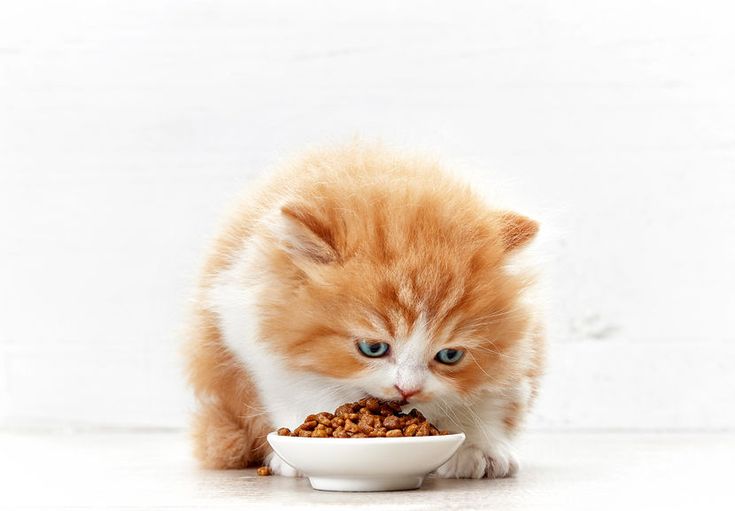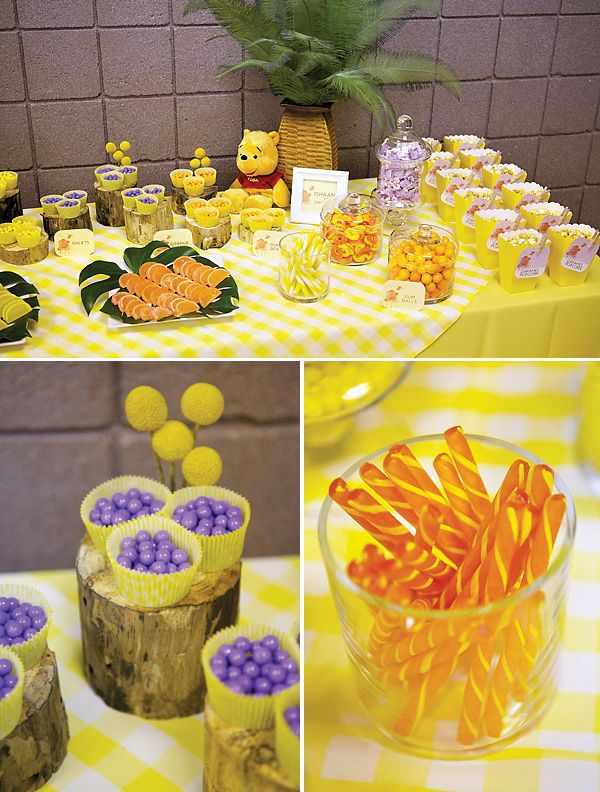Feeding baby formula after one hour
How long does formula last? Your biggest questions answered
When you’re formula feeding your baby, it may seem like you’re making formula all the time. Babies eat often, and their tiny stomachs can only hold so much at once. When your little one constantly wants another bottle, it can be tempting to make your baby formula in batches and have a few days’ worth ready to go.
However, you’ve likely also heard that unused prepared formula should be thrown out after 1 hour. There are a lot of safety rules when it comes to making formula. So how long is formula good for?
Table of Contents
- After preparation, how long can baby formula sit out at room temperature?
- How long does prepared formula last in the fridge?
- How long does unopened baby formula last?
- How long does baby formula last once the container is open?
- Tips for Safely Preparing Infant Formula
- What you should know about formula safety
If you’re switching from breastfeeding to infant formula, it’s important to know that storage recommendations will be different. So how long can formula sit out? Here are the basics:
There are different recommendations for how long prepared formula (that your baby hasn’t drank from) can be left out at room temperature before it should be discarded.
The American Academy of Pediatrics (AAP) says that formula out for longer than 1 hour at room temperature should be thrown away. They also state that formula that has been out for 1 hour or less can be safely stored in the refrigerator.3
The Centers for Disease Control and Prevention (CDC) says that formula does not need to be thrown away until it’s been out at room temperature for more than 2 hours. According to them, if it’s been out for less than 2 hours at room temperature, it can safely be moved to the refrigerator for storage.2
Be sure to check the instructions on your specific formula container and when in doubt, be cautious and stick to the 1 hour rule.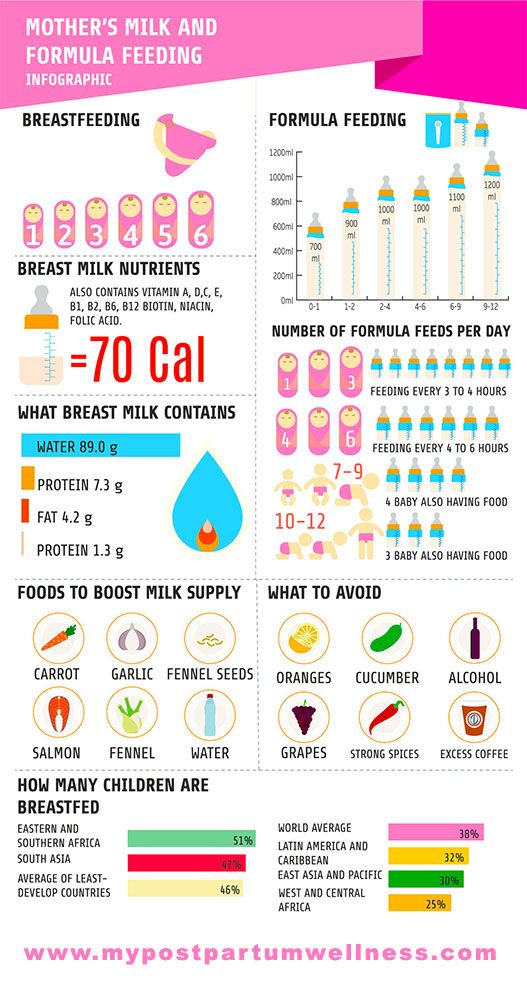
If your baby drank from the bottle, throw away leftover formula
After you prepare formula, any leftovers in the bottle your baby drank from needs to be thrown away. This is because baby’s bottle now contains bacteria from your baby’s mouth, which means it might be contaminated with germs that are likely to multiply.2
How long does prepared formula last in the fridge?How long does formula last in the fridge? That may depend on the type of formula you are using.
Powdered FormulaBoth the AAP and the CDC agree that formula made from powder can be safely stored in the refrigerator for up to 24 hours. After that, it should be thrown away.2,3If the formula has been heated, it must be used within an hour of preparation and cannot be refrigerated regardless of whether your baby drank from it.5
Liquid concentrate and ready-to-feed formulaLiquid concentrate formula needs water added to make a bottle and ready-to-feed formula can be given as is. 3
3
Room Temperature: Like powdered formula, concentrate and ready-to-feed formulas last 1 hour at room temperature and bottles should be thrown away instead of stored in the fridge if your baby drinks from them.2
Refrigerated: Bottles prepared from liquid concentrate and open containers of ready-to-feed formula can be stored in the fridge for up to 48 hours if your baby hasn’t drank from them.2
Do not refrigerate and throw out your formula if:
- Baby already drank from the bottle: If you begin bottle feeding and your baby leaves some formula behind, the leftovers must be discarded within the hour.
- You’ve heated the milk: Warm environments harbor bacteria, so it’s essential that you use prepared infant formula within one hour from when feeding begins.
- It has been more than 24 hours since preparation: It’s always best to make bottles right before you feed them to your baby.
- Formula has passed its expiration date: Check your formula container and label carefully.
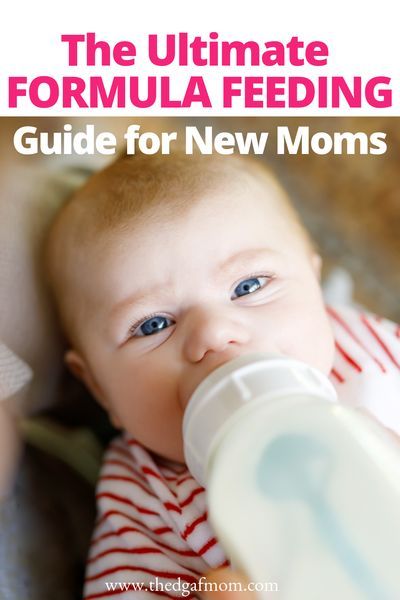
There are a few important things to know about storing infant formula to keep it fresh and safe. Follow your package directions. It should never be kept somewhere outdoors, like in a car, where the container can get too hot.
Powdered Formula
- Unopened, you can rely on the expiration date listed on your formula container. Sealed containers shouldn’t be refrigerated before use. Instead, you should keep them in a cool, dry place until you are ready to use them. Most cans are good for 30 days after they are opened, but always refer to the manufacturer for any questions.
Liquid Concentrate and Ready-to-Feed Formula
- Check the expiration date. Store in a cool, dry place until you are ready to use.
It’s important to follow the instructions on your formula package. Storage varies by formula type.
Powdered Formula
- Once a powdered formula container is opened, it should be used within 1 month. It’s a good idea to keep a pen or marker near where you store your formula so you can write the date you open the container on the lid. Once a formula container is opened, make sure to store it in a cool dry place, but not in the refrigerator.
Liquid Concentrate and Ready-to-Feed Formula
- Each container should state storage instructions – but in general – once you open a liquid or ready-to-feed formula – it should be refrigerated right away and consumed within 48 hours. If you keep it at room temp, it needs to be discarded after two hours.
It’s important to review how to mix and store infant formula safely — even if you’re a parenting pro. Remember, measuring infant formula wrong can cause health problems for babies, so it’s always better to double-check yourself in order to safely feed your baby.
- Sterilizing bottles and equipment
- Make sure to sterilize bottles and nipples before using them for the first time. This can be done by putting them in water at a rolling boil for 5 minutes or using a bottle sterilizer. Usually, after you’ve done this once you can just wash bottles in the dishwasher or in hot water with soap after each use, but check with your baby’s health care provider to be sure.1
- Wash your hands well and clean and sterilize the area where you will be preparing the bottle.2
- Preparing formula ahead of time
- In general, it’s always best to make bottles right before you are going to formula feed them to your baby. However, this isn’t always practical, especially in the middle of the night. So, if you need to make a bottle in advance, just be sure to follow the instructions above for how to refrigerating it.
- Warming baby formula
- It’s safe for babies to have cold, room temperature or warm formula — whichever they prefer is best! Just remember, if you’re going to warm the bottle, use a bottle warmer or place the cold bottle in a bowl of warm water or run the bottle under warm water from the tap.
 Never use a microwave to heat up baby formula, and be sure to test the formula by testing a few drops on the inside of your wrist before giving it to your baby to make sure it’s not too hot.1,2
Never use a microwave to heat up baby formula, and be sure to test the formula by testing a few drops on the inside of your wrist before giving it to your baby to make sure it’s not too hot.1,2
- Freezing baby formula
- You should not freeze formula. Freezing infant formulas is not recommended because this can cause the formula’s components to separate.
- Baby formula expiration date
- Most formula containers need to be used within one month of opening, so write the date you opened it on the lid to keep track of this. And, check the “use by” date on the container — never use formula after this date has passed.2
- Certain babies are at higher risk of getting sick from bacteria in formula, so it’s especially important to carefully follow instructions for making and storing formula for these infants. This includes babies who are less than three months old, who have a problem with their immune system, or who born prematurely.
 2,6
2,6
While quality infant formula is highly regulated and monitored, you must still follow proper preparation routines to ensure your baby’s health. Here are a few essential takeaways to keep in mind when feeding your baby formula:
- Be sure to use prepared, refrigerated formula within 24 hours
- Always read the label for specific instructions
- Store unused formula in the fridge within 1 hour of mixing
- Discard any leftover formula from a bottle your baby drank from
- Heat bottles safely and never in the microwave
- Never use formula past its expiration date
Sources:
1- Formula feeding FAQs: preparation and storage | KidsHealth
2- Infant formula preparation and storage | Centers for Disease Control and Prevention
3- Are you preparing your baby’s bottles correctly? | American Academy of Pediatrics
4- Feeding your infant: how to prepare and store baby formula | Cleveland Clinic
5- How long is formula good once mixed? And other questions about formula | Healthline
6- Preparation and handling of powdered infant formula: a commentary by the ESPGHAN committee on nutrition | Journal of Pediatric Gastroenterology and Nutrition
The content on this site is for informational purposes only and not intended to be a substitute for professional medical advice, diagnosis or treatment. Discuss any health or feeding concerns with your infant's pediatrician. Never disregard professional medical advice or delay it based on the content on this page.
Discuss any health or feeding concerns with your infant's pediatrician. Never disregard professional medical advice or delay it based on the content on this page.
Does Formula Go Bad After an Hour?
The formula that’s been prepared should be consumed or stored in the refrigerator within 1 hour. If it has been at room temperature for more than 1 hour, throw it away. And if your baby doesn’t drink all the formula in the bottle, throw away the unused portion — do not save it for later.
Likewise, people ask, why does baby formula go wrong after an hour? Sip. The 1-hour rule applies to BM or procedure that the baby has already touched. If the baby drinks from a bottle, their saliva causes bacteria to get into it. You can store unused BM and formula in your fridge for way longer.
Secondly, do you have to throw out formulas after an hour? The formula that is sitting out at room temperature must be thrown away after 1 hour. If it is in the refrigerator, the pre-mixed formula (also called ready-to-feed formula) that is opened must be thrown out after 48 hours.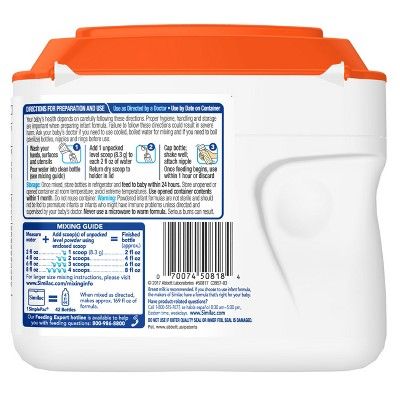 If your baby doesn’t drink all the formula within one hour, throw it out. Check out My Baby Nursery for all your baby product needs.
If your baby doesn’t drink all the formula within one hour, throw it out. Check out My Baby Nursery for all your baby product needs.
Carefully read and follow the instructions on the infant formula container. These steps will help you know how to prepare and store your infant’s formula correctly. Preparing your infant’s formula according to the instructions is essential.
Here are additional pointers to keep in mind when preparing and storing your infant’s formula.
In This Manner, Can Formula Sit Out After an Hour?
Use Quickly or Store Safely Prepared infant formula can spoil if it is left out at room temperature. Use prepared infant formula after an hour of preparation and within one hour from when feeding begins.
Can Cold Formula Upset Baby’s Stomach?
Sure, it would be great to grab a warm bottle from your diaper bag and feed your baby, but the prepared formula is completely unsafe after two hours at room temperature. Using an ice pack will keep the set formula safe for consumption. It will just need to be safely heated up — babies do not like cold milk!
It will just need to be safely heated up — babies do not like cold milk!
When Should I Prepare the Bottles?
Some parents opt to make a bottle just before each feeding, but many others choose to premake and refrigerate enough to use for the day. If you know your baby eats every 3-4 hours, for instance, you can make six to eight bottles to last you all day.
Suppose your baby is staying with a caregiver for an extended period. In that case, you may want to prepare just one or two bottles and leave instructions and supplies (bottles, nipples, formula, and water, if necessary) so the caregiver can prepare bottles as needed and not waste any recipe. After all, you’ll need to throw away any mixed formula that is not used after 24 hours.
Do I Need to Sterilize My Baby’s Bottles?
Before the first use, you’ll need to sterilize nipples and bottles in a rolling boil for 5 minutes. You can also fix them with a store-bought countertop or microwaveable sterilizer, but boiling works just as well and costs nothing.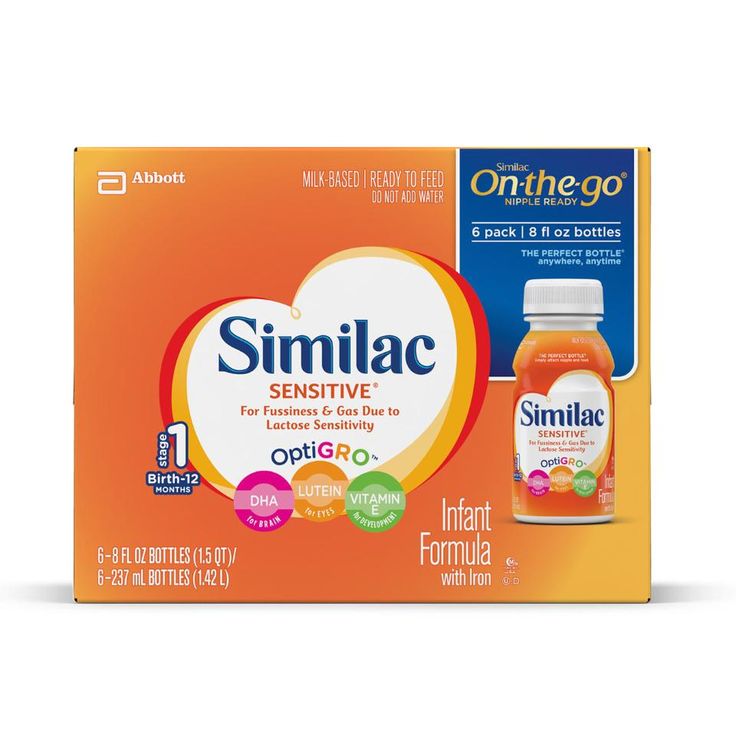
After that, it’s unnecessary to sterilize your baby’s bottles and supplies each time you feed your baby. You will need to wash bottles and nipples in hot, soapy water (or run them through the dishwasher) after every use. They can transmit bacteria if not cleaned properly.
How Do I Prepare My Baby’s Bottles?
Prepare your baby’s formula by mixing water and the appropriate amount of powdered infant formula. The packaging on the side of the formula container will tell you how much to use. Carefully follow the directions. You can use tepid (room temperature) tap water as long as your local or state health departments have labelled it as safe to drink.
If you’re concerned about your water, you may sterilize it to kill germs. Here’s how:
- pour cold tap water into a teapot or saucepan
- place pot on the stove over medium heat
- bring water to a rolling boil, and let boil for about a minute
- let the water cool until it’s at room temperature
Test to see if the water is cool enough for your baby to drink by shaking a few drops of water on the inside of your wrist.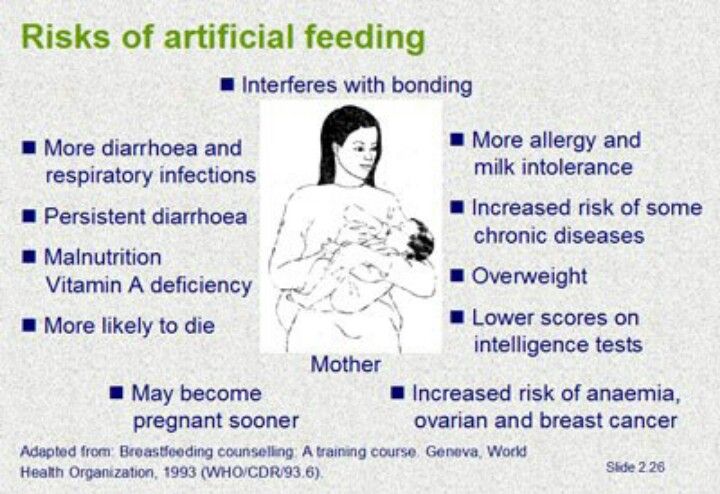 If it stings, it’s still too hot. Once the water has cooled, don’t let it sit longer than 30 minutes before adding it to the formula.
If it stings, it’s still too hot. Once the water has cooled, don’t let it sit longer than 30 minutes before adding it to the formula.
Once prepared, the formula is ready to feed your baby immediately without additional refrigeration or warming. The recipe that’s been prepared should be consumed or stored in the refrigerator within 1 hour. If it has been at room temperature for more than 1 hour, throw it away. And if your baby doesn’t drink all the formula in the bottle, throw away the unused portion — do not save it for later.
The formula may be prepared ahead of time (for up to 24 hours) if you store it in the refrigerator to prevent the formation of bacteria. Open containers of ready-made formula concentrated formula and recipe prepared from concentrate also can be stored safely in the fridge for up to 48 hours.
Preparation
- Wash your hands well before preparing bottles or feeding your baby. Clean and sanitize the workspace where you will be preparing the infant formula.

- Bottles need to be clean and sanitized. To learn more about properly cleaning your baby’s bottles and other feeding supplies, visit the CDC webpage How to Clean, Sanitize, and Store Infant Feeding Items.
- Baby’s milk or infant formula does not need to be warmed before feeding, but some people like to warm their baby’s bottle. If you do decide to warm the bottle, never use a microwave. Microwaves heat milk and food unevenly, resulting in “hot spots” that can burn your baby’s mouth and throat.
- To warm a bottle: Place the bottle under running warm water, taking care to keep the water from getting into the bottle or on the nipple. Put a couple of drops of infant formula on the back of your hand to see if it is too hot.
- If you use powdered infant formula:
- Use water from a safe source to mix your infant formula. If you are not sure if your tap water is safe to use for preparing infant formula, contact your local health department external icon.
- Use the amount of water listed on the instructions of the infant formula container.
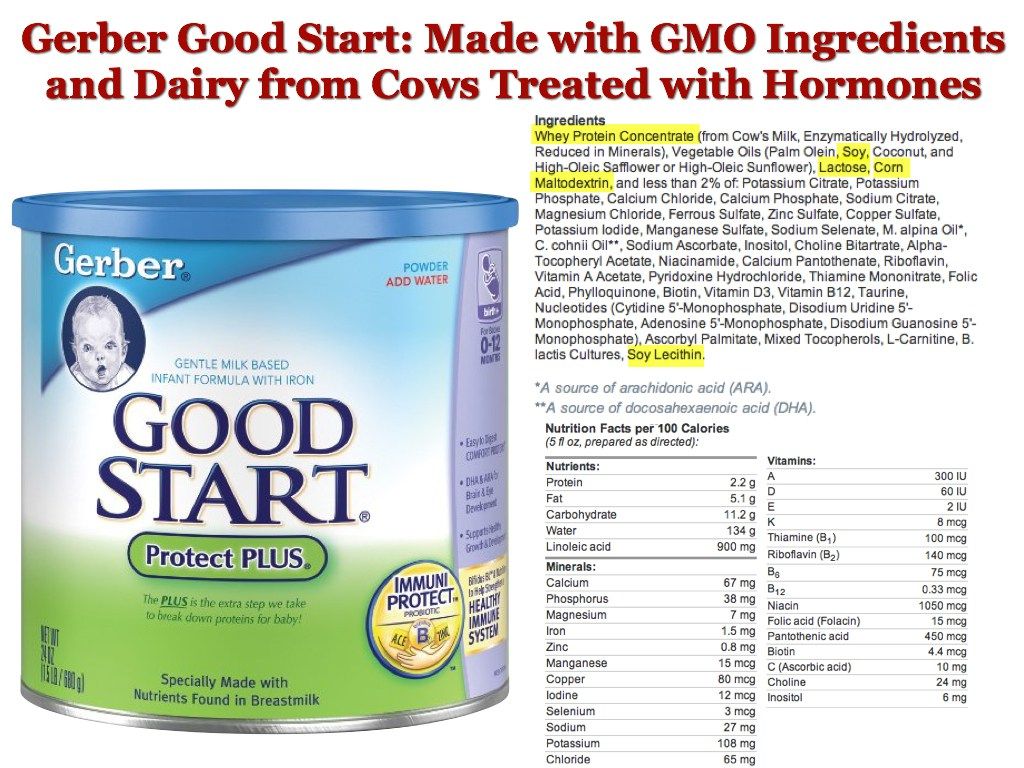 Always measure the water first and then add the powder.
Always measure the water first and then add the powder. - Too much water may not meet the nutritional needs of your baby.
- Too little water may cause your baby’s kidneys and digestive system to work too hard and may cause your baby to become dehydrated.
- If your baby is very young (younger than three months old), was born prematurely, or has a weakened immune system, you may want to take extra precautions in preparing your infant’s formula to protect against Cronobacter
Use Quickly or Store Safely
- Prepared infant formula can spoil if it is left out at room temperature.
- Use prepared infant formula within 2 hours of preparation and within one hour from when feeding begins.
- If you do not start to use the prepared infant formula within 2 hours, immediately store the bottle in the fridge and use it within 24 hours.
- Throw out any infant formula that is left in the bottle after feeding your baby. The combination of infant formula and your baby’s saliva can cause bacteria to grow.
 Be sure to clean and sanitize the bottle before its subsequent use.
Be sure to clean and sanitize the bottle before its subsequent use. - Store unopened infant formula containers in a cool, dry, indoor place—not in vehicles, garages, or outdoors.
- Once a container of infant formula is opened, store it in a cool, dry place with the lid tightly closed. Do not store it in the refrigerator.
- Most infant formulas need to be used within one month of opening the container (check the label). When you first open the container, write the date on the lid to help you remember.
- Never use the formula after the “Use By” date on the container.
How Do You Know If Formula Disagrees With a Baby?
Some of the signs that your baby is allergic to the type of formula you’re feeding him or her are Excessive crying or fussiness after feeding. Extra gas. Very loose, watery stools.
Other signs include:- Dry, red, and scaly skin.
- Diarrhea.
- Extreme fatigue or weakness.
- Forceful vomiting.
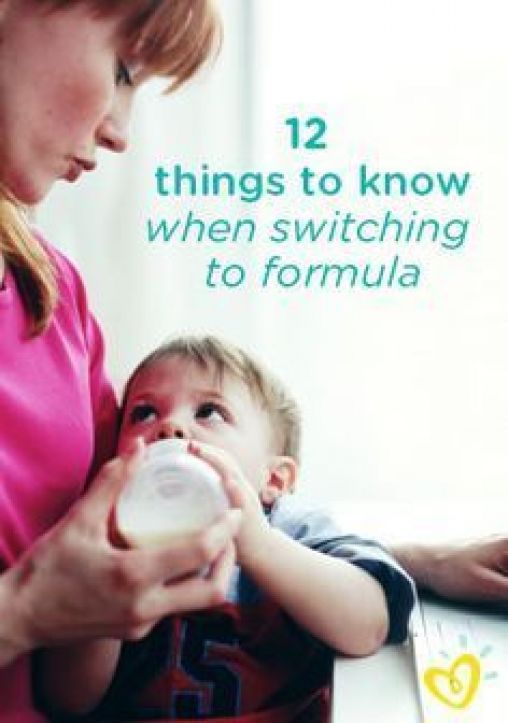
What Happens If a Baby Drinks Old Breast Milk?
What will happen if a baby drinks spoiled breast milk? It could cause vomiting or diarrhea, which could be dangerous for your baby.
Does Formula Make Babies Fat?
A study published online Monday in the journal Pediatrics finds that babies fed a particular type of infant formula put on more weight than other babies and continued to gain weight faster than their counterparts during the first 7.5 months of life
Do You Reuse Formula for the Next Feeding?
Always throw away any formula left in a bottle after feeding your baby. Do not refrigerate the leftover formula to provide it to your baby later. Drinking from a bottle means bacteria from the baby’s mouth get into the bottle’s recipe, where the bacteria can start growing. Online baby product directory at My Baby Nursery.
Can You Reheat Formula Milk?
Unfortunately, you can’t reheat it. The formula should be used immediately and never be reheated. You should discard whatever recipe is left. Note: Babies don’t require warm milk (whether it’s a formula or breast milk).
You should discard whatever recipe is left. Note: Babies don’t require warm milk (whether it’s a formula or breast milk).
Can You Give Baby Formula After 2 Hours?
Use prepared infant formula within 2 hours of preparation and within 1 hour from when feeding begins. If you do not start to use it within 2 hours, immediately store the bottle in the fridge and use it within 24 hours. Throw away the formula left in the bottle after feeding your baby.
Does it Last Longer Refrigerated?
Yes, as long as your baby doesn’t drink from the bottle.
How Many Scoops of Formula Is 3oz?
One scoop is 2 oz for Similac, so 1.5 scoops for 3 oz and 2.5 for 5 oz.
An unused bottle of formula mixed from powder can last up to 24 hours in the fridge. That’s why many parents opt to make a larger batch of procedure in the morning and portion out into bottles — or pour into bottles as needed — for use throughout the day.
These parents know that a crying baby is often a hungry right-now baby who doesn’t want to wait for you to mix a bottle.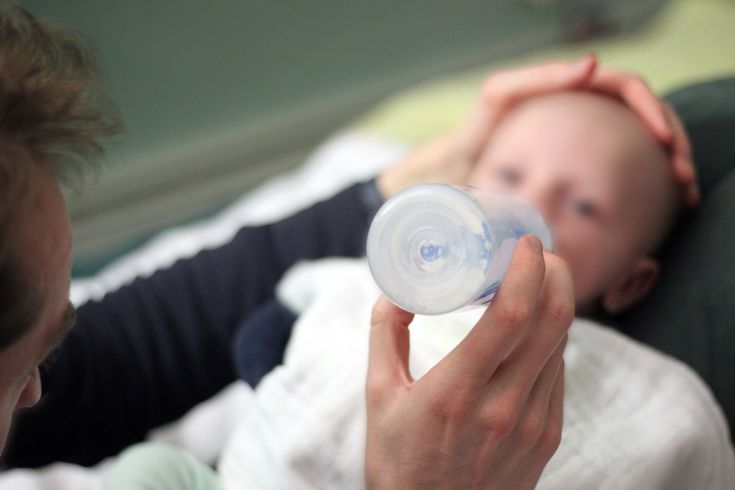 Your fridge temp should be 40°F (4.4°C) or lower.
Your fridge temp should be 40°F (4.4°C) or lower.
How many formulae Do I Give My Baby?
Your baby needs around 150 ml of formula per kilogram of body weight per day until he’s three months old. Some babies might need up to 200 ml of formula per kilogram of body weight per day, especially preterm babies. So a one-month-old baby who weighs 4 kg might have between 600-800 ml of formula.
As an aside, it’s not recommended that you freeze the formula. It can change the texture and doesn’t extend the period during which the procedure is still suitable. If you’re new to formula after breastfeeding, it’s essential to know the guidelines are different in this and other regards.
Does a Partially Used Bottle Last as Long in the Refrigerator as a Freshly Mixed One?
No. If your little one has had some of a bottle but doesn’t want the rest, you should dump it within an hour. Please don’t put it in the fridge for later use.
Milk-based products are notorious for growing bacteria. Once your baby has drunk from a bottle, bacteria is introduced, and the formula shouldn’t be saved. (Incidentally, this is also why you shouldn’t drink directly from the milk carton, even if it’s just a swig after that chocolate chip cookie.)
Once your baby has drunk from a bottle, bacteria is introduced, and the formula shouldn’t be saved. (Incidentally, this is also why you shouldn’t drink directly from the milk carton, even if it’s just a swig after that chocolate chip cookie.)
If You’ve Heated a Bottle, Can You Store the Unused Portion in the Fridge and Use it Again Later?
Nope. Again, bacteria is the issue here — and bacteria thrive even more once given a friendly, warm environment to grow in.
Something else to know: If you’ve warmed up a bottle, our previous 2-hour guideline for the new formula doesn’t apply. A heated bottle should be used within 1 hour, and any remaining should be poured down the sink after that time. This applies to formulas prepared from powder as well as concentrates and ready-to-drink options.
How Long Is Powdered Formula Good for After Mixing?
Yes, as long as your baby doesn’t drink from the bottle. An unused bottle of formula mixed from powder can last up to 24 hours in the fridge.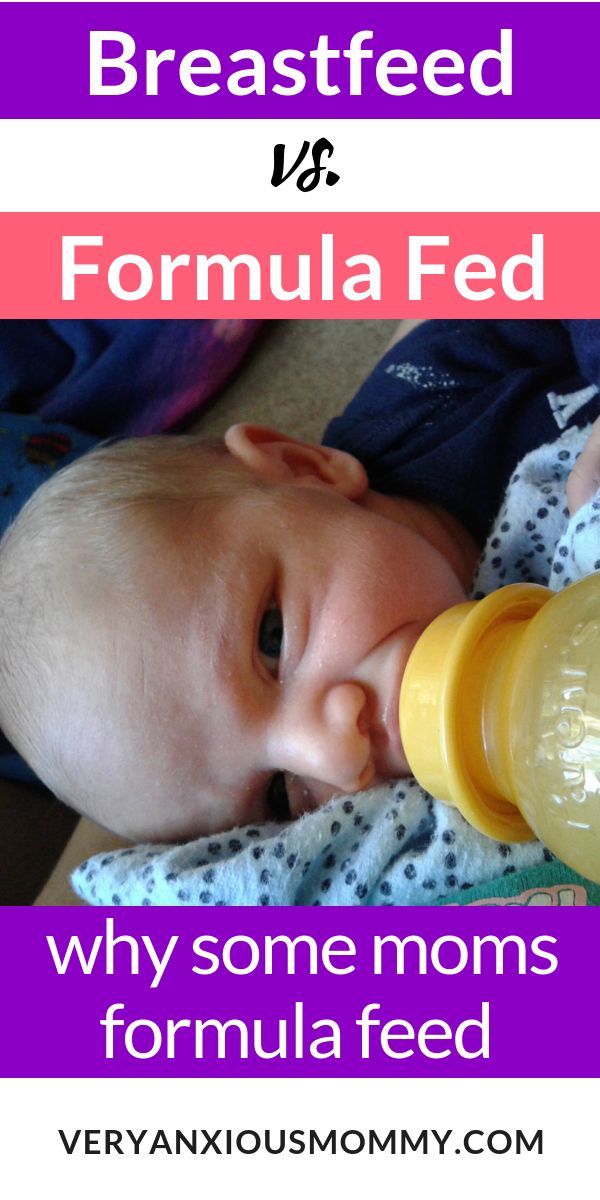 That’s why many parents opt to make a larger batch of procedure in the morning and portion out into bottles — or pour into bottles as needed — for use throughout the day.
That’s why many parents opt to make a larger batch of procedure in the morning and portion out into bottles — or pour into bottles as needed — for use throughout the day.
How Long Does the Unmixed Formula Last Once the Container Is Opened?
Generally, it would help if you used up powdered formula within a month of opening the container. We found this to be the guideline on labels for popular brands like Similac and Enfamil and organic alternatives from Happy Baby Organics and Earth’s Best. This shouldn’t be a problem, given your little one’s voracious appetite!
How Long Does the Unopened, Unmixed Formula Last?
Fortunately, you don’t have to guess at this one or remember the day you bought the formula. A sealed container of procedure, whether powder, concentrate, or ready-to-drink, will always have an expiration date on it. In most cases, you’ll find this printed on the bottom.
The powdered formulas we looked at in our local store had dated more than a year away.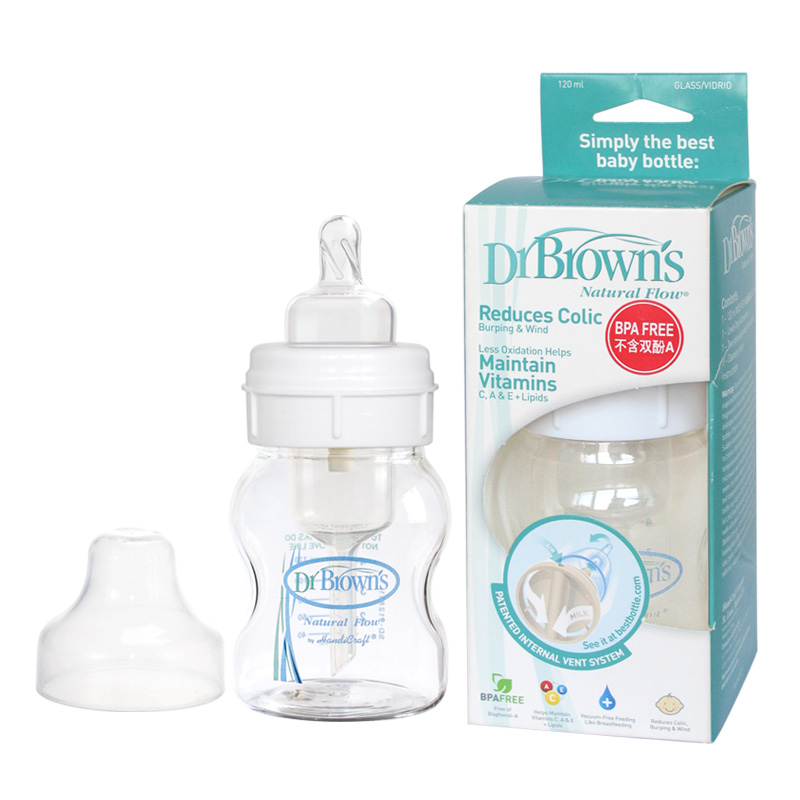 So if you find yourself with unopened containers after your baby transitions off procedure, at least you’ll be prepared for any upcoming zombie apocalypse.
So if you find yourself with unopened containers after your baby transitions off procedure, at least you’ll be prepared for any upcoming zombie apocalypse.
Store sealed containers in a cool, dry place and avoid exposure to extreme temperatures.
How Do You Make Formula on the Go?
Preparing feeds on the go- A measured amount of formula powder in a small, clean and dry container.
- A vacuum flask of hot water that’s just been boiled.
- An empty sterilized feeding bottle with cap and retaining ring in place.
Is Ready Made Formula Easier to Digest?
Yes, the premade version tastes sweeter, and it is slightly easier to digest.
How Long Can a Bottle Keep at Room Temperature?
Discard any prepared or ready-to-feed formula that’s been sitting out after 1 hour.
If Formula Is Left Over, Can I Offer it Again?
No, throw away any leftover formula. There is a chance bacteria may have formed since the last feeding, which could make your baby sick.
The Takeaway
All the rules surrounding formula can seem a little nitpicky but remember it’s your baby’s delicate tummy you’re dealing with, and the guidelines suddenly become incredibly doable. And you’ll get the hang of how much your baby eats pretty quickly, decreasing or even eliminating the amount of formula that ends up down the drain. My Baby Nursery is your one-stop baby product store.
“When in doubt, dump it out” is a good rule of thumb here. But like all things baby, you’ve got this and will soon be running on automatic — though we can’t promise you’ll never doze off after preparing a bottle!
Feeding on demand or by the hour? What to do if the baby is bottle-fed
It would seem that strictly hourly feeding is a thing of the past, and we hear from everywhere that a newborn needs to be fed on demand. But this applies to breastfeeding, and in the case of artificial, everything is not so simple. How to feed an artificial baby and what is important to remember when choosing a mixture - in the material "Daily Baby".
Feeding: on demand or by the hour?
In Soviet times, it was recommended to feed a newborn on any type of feeding strictly by the hour. There was no question of any wards of joint stay with the baby.
Times have changed, and today doctors are unanimous on this issue: it is more expedient to feed a baby "on the breast" on demand and apply it at his slightest request. But what are the norms for feeding an artificial child? Is it right to give the baby a mixture “on demand” or in this case, do you still need a diet?
Doctors recommend following a certain regimen when feeding a child with artificial formula. Feeding a newborn "on demand" on an artificial form of feeding is almost impossible, because, firstly, it is not always convenient to quickly and at the first request of the child to prepare the mixture.
And secondly, when feeding on demand, it is difficult to track the amount of food received by the baby. And if it’s impossible to overfeed with a breast, then with a mixture it’s completely.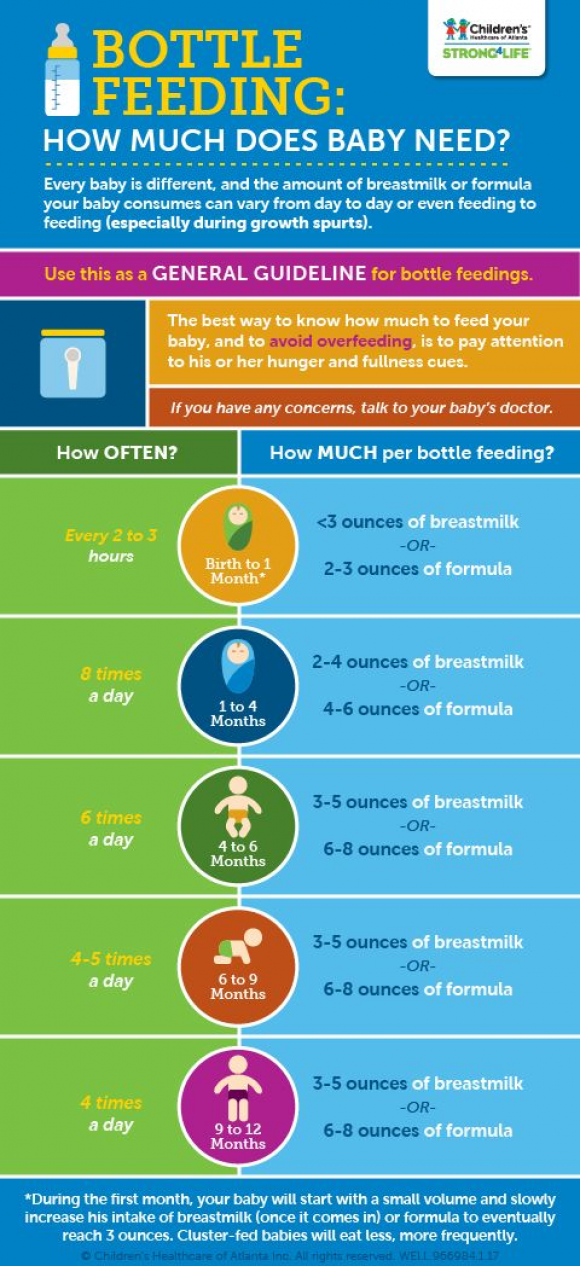 Modern artificial mixtures, although they contain a lot of nutrients, but, whatever one may say, breast milk is easier and easier to digest. Therefore, when feeding with a mixture, the regimen is so important. Doctors insist: you need to feed the newborn with a mixture not at the request of the baby, but strictly on time.
Modern artificial mixtures, although they contain a lot of nutrients, but, whatever one may say, breast milk is easier and easier to digest. Therefore, when feeding with a mixture, the regimen is so important. Doctors insist: you need to feed the newborn with a mixture not at the request of the baby, but strictly on time.
Hourly formula feeding is also important because this type of feeding is an acute issue of hygiene. Bottles and nipples must be perfectly clean, and the mixture must be freshly prepared.
You also need to remember that the stool of a bottle-fed baby should be daily. Due to the fact that the formula is absorbed and digested longer, the frequency of meals should be lower than when breastfeeding. Otherwise, there is a risk of overfeeding the child, and there are not far from problems with the gastrointestinal tract and obesity. There is also the possibility of underfeeding, which is why nutritional order is so important.
Artificial feeding: how to properly feed
There is no single and clear schedule for feeding an artificial newborn. It is necessary to focus on a specific baby and adjust the nutrition plan for him. The optimal intervals between feedings and the volume of the mixture eaten must be selected individually. Parents should be patient and gradually accustom the child to the regime that suits him.
It is necessary to focus on a specific baby and adjust the nutrition plan for him. The optimal intervals between feedings and the volume of the mixture eaten must be selected individually. Parents should be patient and gradually accustom the child to the regime that suits him.
It is recommended to take notes while observing the behavior and well-being of the child. So you can adjust the daily routine, making it the most comfortable for the baby. At the same time, small deviations from the regime, in half an hour or an hour, are quite acceptable.
Artificial babies of the first month of life are fed about six to seven times a day, the interval between feedings is about three and a half hours. At night, it is desirable to withstand six hours without feeding. Haphazard or more frequent meals can cause indigestion, as well as the appearance of increased gas production in the baby, colic and frequent spitting up.
With age, the hours of feeding a newborn formula change: the intervals between meals increase.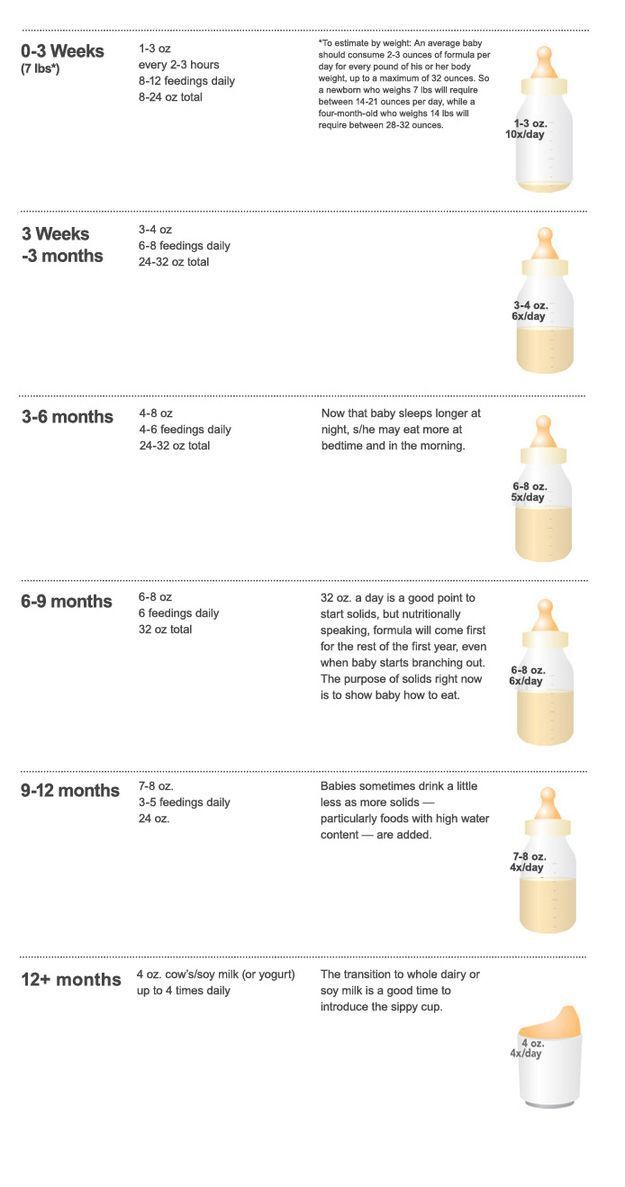 A six-month-old child is given a mixture about five times a day. From the age of 7 months, the baby is fed with a mixture approximately every 5 hours, taking into account the fact that at this age the baby is actively eating complementary foods.
A six-month-old child is given a mixture about five times a day. From the age of 7 months, the baby is fed with a mixture approximately every 5 hours, taking into account the fact that at this age the baby is actively eating complementary foods.
“Children of the first year of life, especially the first half of the year, grow and develop very actively, and this requires a regular supply of nutrients. Formula-fed infants are usually fed once every 2-3 hours.
It is very important to calculate the child's daily energy requirement. For full-term healthy babies up to 6 months, this is 115 kcal per kilogram of weight. But children are also very large. There is an upper limit of the daily volume of the mixture: for three months it is 850 ml, for 5 months and above - no more than 1000 milliliters of the mixture per day.
Unlike breastfeeding, the daily volume of the formula must be controlled, because obesity and overfeeding during artificial feeding are more dangerous.
Children with a good appetite, who are already low on the maximum daily volume, after 4 months can be introduced complementary foods, but do not increase the mixture.
Bottle-fed water may be offered to children, but this is not required, at the request of the child. Again, the daily volume of water is important - no more than the volume of one feeding.
I would also add that formula-fed on-demand feeding is not recommended, since formulas, even the highest quality ones, do not have such good digestibility as human milk. And the risk of overfeeding is high,” says pediatrician Anna Ganina .
Pay attention to the stool of a bottle-fed newborn. The appearance of mucus in it, a strong liquefaction of the stool, or, conversely, constipation may warn that the mixture is not suitable for the baby.
However, it is important to remember that you should not change baby food too often and unreasonably. It is better if the child eats one, suitable for him, high-quality and healthy mixture.
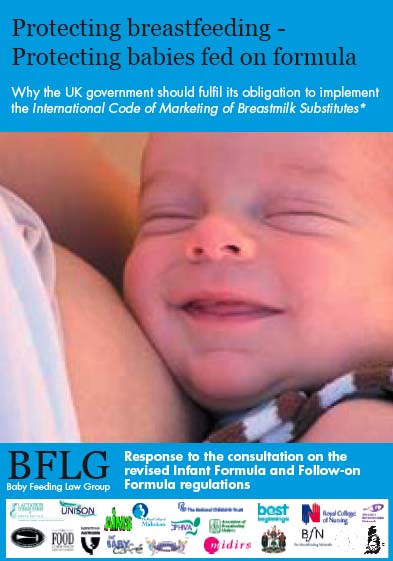
If you follow all the rules of feeding, the growth and development of the baby on artificial feeding will proceed in accordance with the norms.
Kabrita Gentle Nutrition based on goat milk
Kabrita infant formula based on goat milk has an adapted protein composition. Goat's milk is closer in composition to breast than cow's, it is digested faster and easier than cow's milk, so feeding a newborn with goat's milk formula is preferable. Such food is faster digested, better absorbed and reduces discomfort when switching from breastfeeding to artificial or mixed.
Kabrita baby food is a state-of-the-art formula based on natural Dutch goat's milk.
Kabrita formulas contain the unique Digest X fat complex that mimics the fat profile of breast milk. The mixtures are enriched with goat milk whey, which is rich in polyunsaturated fatty acids. Goat milk whey is highly digestible and digestible. All this helps to avoid constipation, increases energy metabolism and promotes better absorption of calcium in the child's body.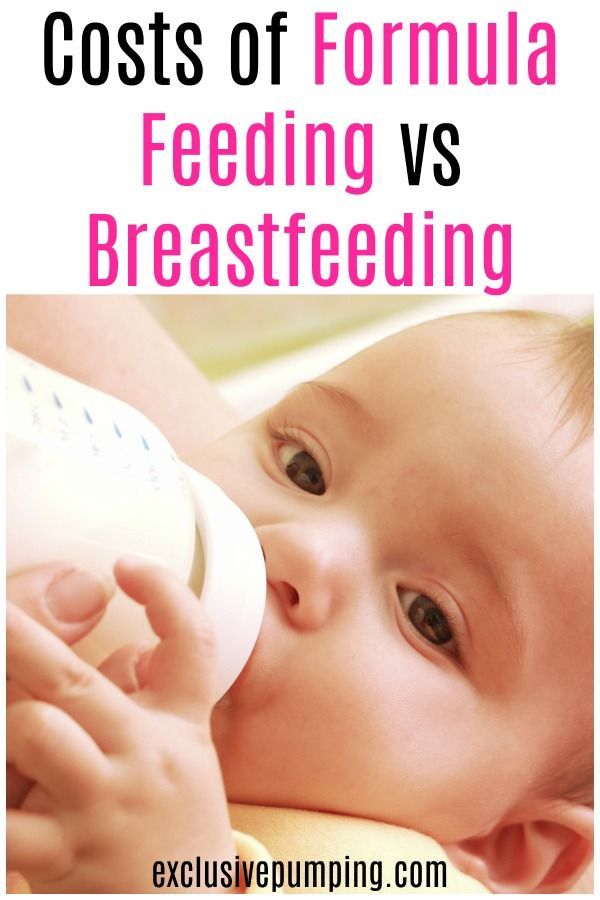 Goat milk is ideal for natural easy digestion.
Goat milk is ideal for natural easy digestion.
— share with your friends!
Experts: Anna Ganina
Read more
- It's not that simple, or Why formula feeding should be done wisely
- Newborn care and first week at home. Top 10 Questions from Moms
- Porridge for the first feeding: what is the best to start with and how to make it tasty without sugar
How to prepare infant formula
How to make formula for your baby.
In order for your baby to grow up healthy and feel good, it is important not only to choose the right formula, but also to use it correctly.
In the first months of life, the child's body goes through a period of adaptation to extrauterine conditions, the entire first year the baby grows and develops intensively. Everything that surrounds the baby from birth should contribute to its development, be as useful and safe as possible. That is why when preparing infant formula, it is necessary to strictly observe the rules of hygiene, recommendations for handling the product and take into account storage conditions.
That is why when preparing infant formula, it is necessary to strictly observe the rules of hygiene, recommendations for handling the product and take into account storage conditions.
To prepare the mixture, use only boiled water - it must be boiled strongly for at least 5 minutes. Bottled water is not sterile and should also be boiled before use. Do not heat water in the microwave.
Cool the boiled water to the temperature recommended by the manufacturer and dilute the mixture following the instructions. To measure the mixture, use only the measuring spoon supplied with the package.
If you dilute formula for more than one feeding, it should be stored in the refrigerator at 2-4°C and used within 24 hours. After the start of feeding, a portion of the mixture should be used within an hour, as reconstituted infant formula is an excellent breeding ground for microorganisms. After an hour, the rest of the mixture should be poured.
Often a newborn baby can fall asleep right during feeding - do not worry if this happened to your baby. Just lightly pat your baby on the cheek or nose, and if he wakes up, continue feeding.
Just lightly pat your baby on the cheek or nose, and if he wakes up, continue feeding.
Pay attention.
Dry infant formula after opening the package are not sterile. Use the product in accordance with the instructions and recommendations of the doctor.
When opening a package with dry infant formula containing healthy fats Omega-3, Omega-6, a slight fishy smell is possible - this is normal, because similar fatty acids are also found in fish oil, the benefits of which we have known since childhood. This smell disappears and is not felt in the diluted mixture.
Do not cook or heat the mixture in the microwave. In microwave ovens, food is heated unevenly, so some of the mixture may be too hot for the baby.
What utensils do you need to prepare the mixture?
Bottle, nipple, cap, measuring spoon, knife for removing excess mixture from the spoon. Two pots: in one you will boil the dishes, in the other - water for preparing the mixture.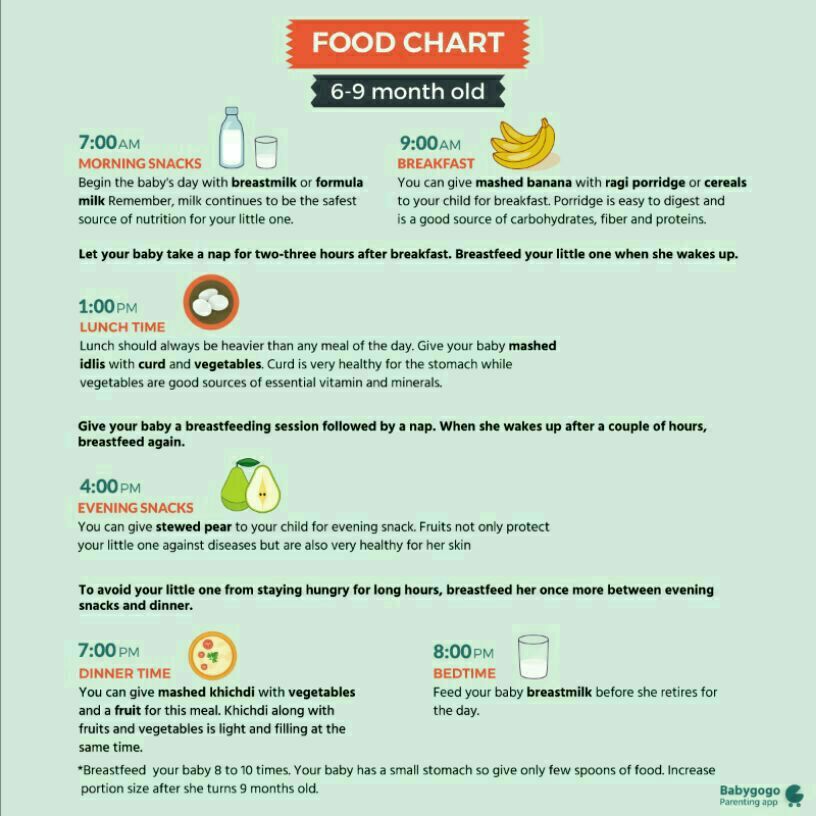 There are also convenient modern sterilizers and heaters that you can use when preparing the mixture.
There are also convenient modern sterilizers and heaters that you can use when preparing the mixture.
Preparing one meal
1. Wash your hands with soap and dry them with a clean towel. Thoroughly wash the bottle, nipple, cap, measuring spoon and all utensils that will be used to prepare formula. It is best to do this with a special product for children's dishes - it is more gentle. Be careful when washing baby utensils in the dishwasher: due to the narrow neck, the bottle often remains unwashed, despite the fact that bottles of most manufacturers are allowed to be washed in the dishwasher. For washing bottles, special brushes are provided, with which you can thoroughly rinse the bottle.
2. Rinse all dishes to remove detergent and boil them for 5 minutes.
3. Prepare a clean surface to mix.
4. Boil water in a separate saucepan at a high boil for 5 minutes. Unless otherwise specified in the instructions, mixtures containing probiotics, such as Similac Gold or Similac Comfort, must be diluted with boiled water cooled to a temperature of no more than 35 degrees in order to preserve the beneficial properties of beneficial bacteria.
Unless otherwise specified in the instructions, mixtures containing probiotics, such as Similac Gold or Similac Comfort, must be diluted with boiled water cooled to a temperature of no more than 35 degrees in order to preserve the beneficial properties of beneficial bacteria.
5. Pour the required amount of warm, pre-boiled water into the sterilized bottle. Remember that you should not mix boiled and unboiled water to achieve the desired temperature.
6. Fill the included measuring spoon with the mix, then use the blade of a clean knife to remove the excess mix.
7. Add formula to water bottle as directed. Add dry mix to the bottle, not the other way around.
8. Stir until completely dissolved. For feeding, the mixture must be at human body temperature, i.e. approximately 35 ° C - check the temperature of the mixture and feed the baby. If the mixture is too hot, you can cool it down quickly by placing the bottle in a bowl of cold water.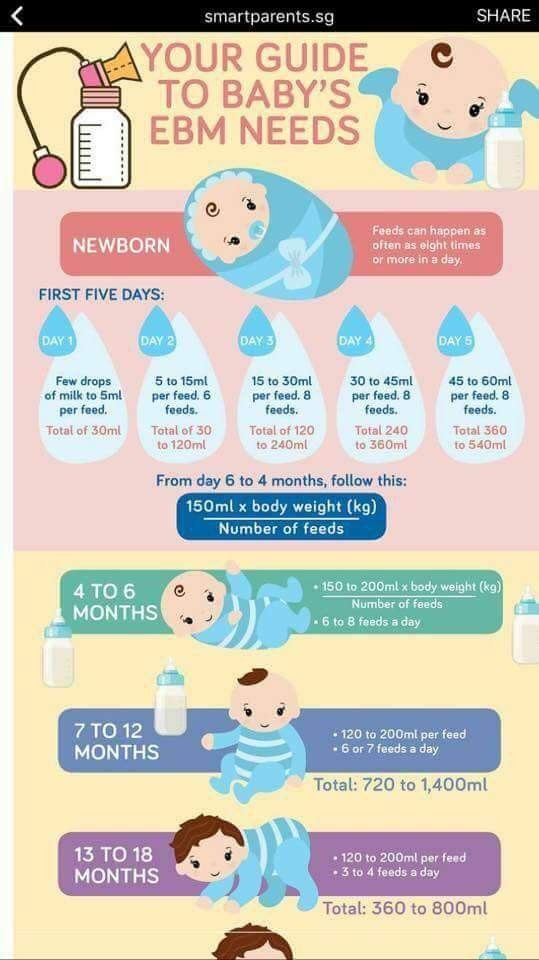
9. Sit back, hug your baby, and maintain physical and eye contact while formula feeding. Prepare a napkin in advance in case of excess mixture, and after feeding, scold the baby with a “column” so that he burps the air that has entered the stomach during feeding.
Pour out the remains of the mixture left in the bottle that the child has not eaten for an hour.
How do I properly heat formula bottles?
If you have prepared several servings of formula for feeding your baby in advance, and the bottle of formula is just out of the refrigerator, it is important not only to warm the formula, but also to do it right. So here's how to do it:
- Take the bottle of prepared formula out of the refrigerator just before feeding.
- Warm the formula by placing the formula bottle in a container of hot water so that the water level is below the rim of the bottle. In order for the mixture to heat up evenly, periodically shake or rotate the bottle, while the warm-up time should not exceed 15 minutes.

- Check the temperature of the mixture by dropping a little on the inside of your wrist. The mixture should not be too hot, it must be cooled to a human body temperature - 35 ° C.
How do I take pre-prepared infant formula with me on trips and outings?
The first step is to cool the prepared mixture. During a trip or a walk, it should be stored in a cold place - this will help prevent the development of pathogenic bacteria.
- Prepare the mixture as you would normally, let it cool and refrigerate (max. 5°C unless directed otherwise).
- Remove the formula from the refrigerator just before leaving the house and put it in a special cooler bag.
- Once there, you can put the formula bottles back in the fridge or warm them up and use them for feeding.
- Remember that the mixture must be used within 24 hours.
If the planned trip or walk is longer than two hours, you may not be able to keep the bottles of formula cold - in this case, freshly prepared formula must be used for feeding.


